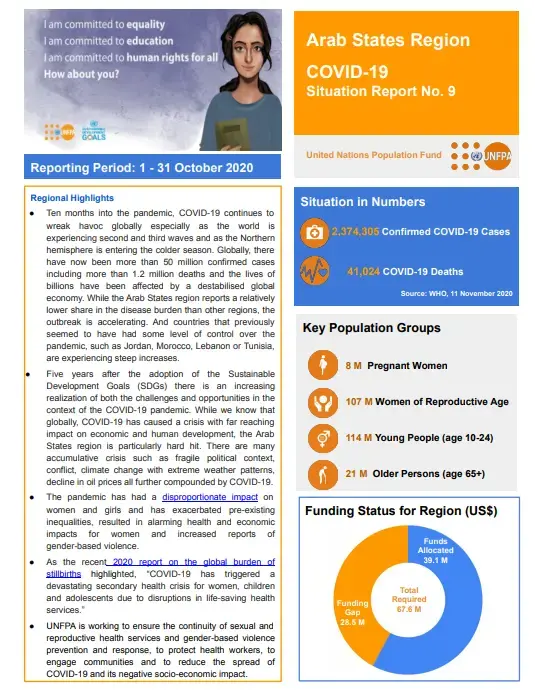- Ten months into the pandemic, COVID-19 continues to wreak havoc globally especially as the world is experiencing second and third waves and as the Northern hemisphere is entering the colder season. Globally, there have now been more than 50 million confirmed cases including more than 1.2 million deaths and the lives of billions have been affected by a destabilised global economy. While the Arab States region reports a relatively lower share in the disease burden than other regions, the outbreak is accelerating. And countries that previously seemed to have had some level of control over the pandemic, such as Jordan, Morocco, Lebanon or Tunisia, are experiencing steep increases.
- Five years after the adoption of the Sustainable Development Goals (SDGs) there is an increasing realization of both the challenges and opportunities in the context of the COVID-19 pandemic. While we know that globally, COVID-19 has caused a crisis with far reaching impact on economic and human development, the Arab States region is particularly hard hit. There are many accumulative crisis such as fragile political context, conflict, climate change with extreme weather patterns, decline in oil prices all further compounded by COVID-19.
- The pandemic has had a disproportionate impact on women and girls and has exacerbated pre-existing inequalities, resulted in alarming health and economic impacts for women and increased reports of gender-based violence.
- As the recent 2020 report on the global burden of stillbirths highlighted, “COVID-19 has triggered a devastating secondary health crisis for women, children and adolescents due to disruptions in life-saving health services.”
- UNFPA is working to ensure the continuity of sexual and reproductive health services and gender-based violence prevention and response, to protect health workers, to engage communities and to reduce the spread of COVID-19 and its negative socio-economic impact.
Sexual and reproductive health
Human Rights and Gender Equality
What we do
COVID-19 Situation Report No. 9

Publisher
UNFPA
Number of pages
13
Author
UNFPA
Situation Report
COVID-19 Situation Report No. 9
Publication date
18 November 2020

